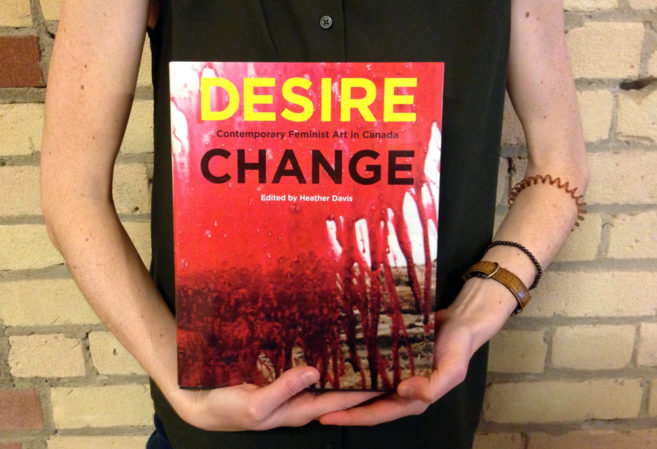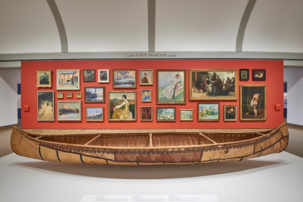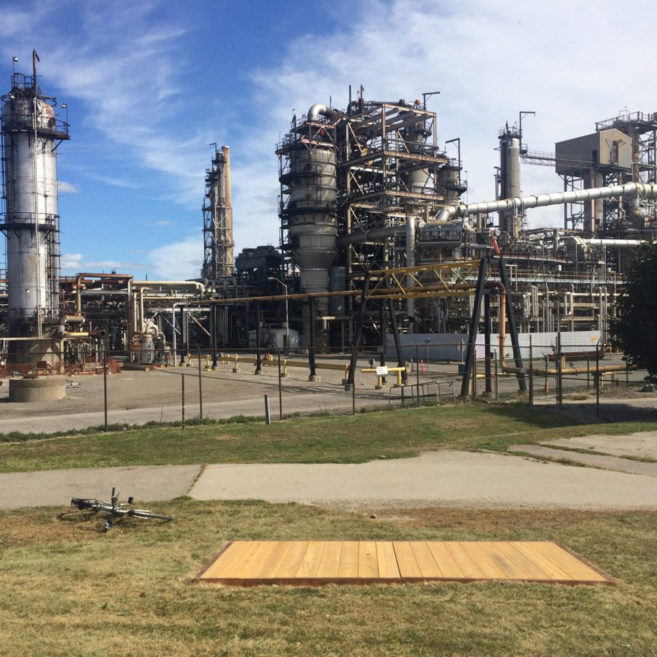The first time I saw a performance by Rebecca Belmore was in my mind’s eye. I was a student in Vancouver and a friend was relating what it had felt like to witness Vigil, the artist’s exhausting 2002 performance about the 60 women (mostly Indigenous) who had gone missing from the city’s Downtown Eastside. Although I was not in the audience that day and have only become familiar with the piece as it exists in the installation The Named and the Unnamed (recently seen in Toronto for “Projections“) it is difficult to shake the feeling that I was there. Such is the provocative and enduring nature of Belmore’s performances. Ephemeral in their use of everyday materials and lack of documentation, the artist’s ceremonial actions live on through viewers’ stories and are reinvigorated with new meaning as they are told and retold through time. “Rising to the Occasion,” the Anishinaabe artist’s mid-career retrospective currently on view at the Vancouver Art Gallery, underscores the continuing resonance of Belmore’s work by framing her sculptures and installations as material residue from these performances.
Eschewing a chronological account of Belmore’s practice, curators Daina Augaitis and Kathleen Ritter present early and recent pieces alongside one another, drawing out thematic links throughout the artist’s career. The juxtapositions that result not only point to Belmore’s ongoing concerns with colonial violence, modes of resistance and their impacts on the human body, but also illuminate the gradual shifts that have taken place in her artistic practice over the past 20 years. The exhibition opens, for instance, with a pairing of one of the artist’s oldest works—1987’s Rising to the Occasion, a Victorian-style dress resembling a beaver dam and adorned with broken china teacups, which was worn by Belmore during the Duke and Duchess of York’s official visit to Canada—with one of her newest, 2008’s beautiful but disturbing colour photograph Fringe. References to historical representations of the female body abound in both pieces, recalling full-length Victorian portraits and the reclining nude figure in Ingres’s La Grande Odalisque. But while the political message of a dress made from the wreckage of British colonialism is overt, the implications of the beaded scar along the woman’s back in Fringe are more subtle and complex. Presented as a light box transparency, the photo’s radiating light quietly implicates the viewer in the image, raising questions about how we picture and take responsibility for bodily violence: are scars records of past damage, or signs of future healing?
Belmore’s ambitious Fountain installation, created for the 2005 Venice Biennale, similarly represents a moment on the cusp of a traumatic colonial past and an unforeseen future. Rear-projected onto a screen of cascading water in a completely dark room, the video shows Belmore struggling to pull a bucket of water from the ocean and carry it to shore to extinguish a fire on the beach. The sounds of rushing water and the waves of light that bounce off the screen and into the gallery create an immersive and otherworldly space where viewers wait in limbo for Belmore to successfully put out the fire. Just as the waves continue to crash into the shore, however, the artist’s actions seem similarly predestined and cyclical: at the end of each video loop, Belmore continuously throws the water towards the camera only to have it transform into blood upon impact.
Although her recent work seems to express a more complicated and nuanced relationship with Canada’s colonial history, Belmore’s earlier polemical works have taken on a new prescience—particularly in light of recent developments in Indigenous politics. Ayum-ee-aawach Ooomama-mowan: Speaking to Their Mother is a giant megaphone built by the artist in 1990 that has been used by dozens of activist groups to literally and metaphorically speak to the earth and those entrusted with its care. In the exhibition, the piece is represented by photo documentation and audio recordings of the megaphone’s past use. Viewing these artifacts just days after the Canadian government’s very public residential schools apology served as a reminder that Belmore’s work—and its ability to inspire new kinds of storytelling—continues to have critical potency.

 Rebecca Belmore, Fringe, 2008. Cibachrome transparency in fluorescent lightbox, 81.5 x 244.8 x 16.7 cm. National Gallery of Canada, Purchase, 2011. © Rebecca Belmore.
Rebecca Belmore, Fringe, 2008. Cibachrome transparency in fluorescent lightbox, 81.5 x 244.8 x 16.7 cm. National Gallery of Canada, Purchase, 2011. © Rebecca Belmore.







